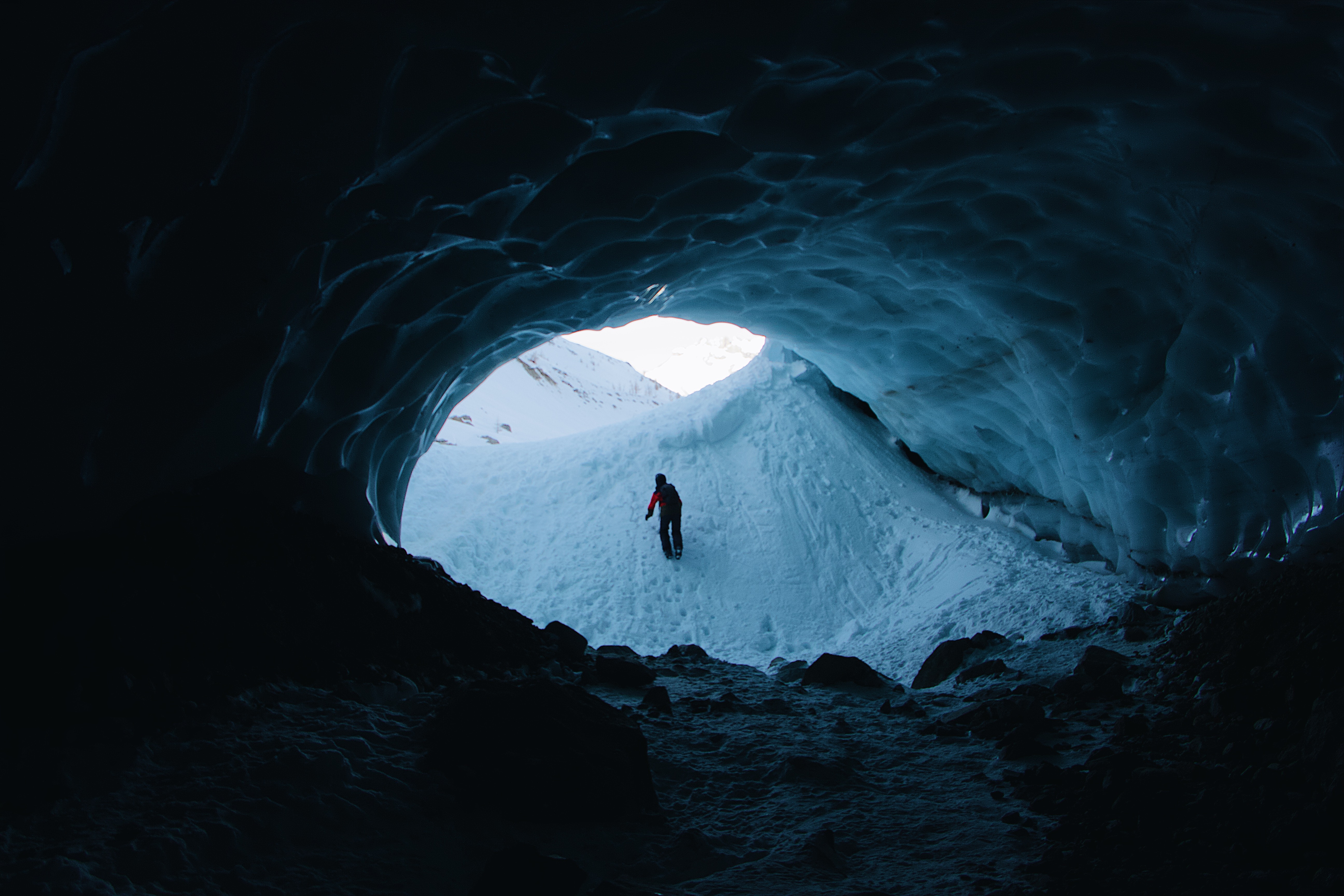Shelter
Climbers use a few different forms of shelter depending on the situation and conditions. Shelter is a very important aspect of safety for the climber as weather in the mountains may be very unpredictable. Tall mountains may require many days of camping.
Short trips lasting less than a day generally do not require shelter, although for safety, most mountaineers will carry an emergency shelter
Camping

Typical shelters used for camping include tents and bivouac sacks. The ability of these shelters to provide protection from the elements is dependent on their design. Mountaineers who climb in areas with cold weather or snow and ice will use more heavy-duty shelters than those who climb in more forgiving environments.
In remote locations, mountaineers will set up a "base camp", which is an area used for staging attempts at nearby summits. Base camps are positioned to be relatively safe from harsh terrain and weather. Where the summit cannot be reached from base camp in a single day, a mountain will have additional camps above base camp. For popular mountains, base camps may be at a fixed location and become famous. The Everest base camps and Camp Muir are among the most famous base camps.
Hut

Camping is not always an option, or may not be suitable if a mountain is close to civilization. Some regions may legally prohibit primitive camping due to concern for the environment, or due to issues with crowds. In lieu of camping, mountaineers may choose to stay in mountain huts.
The European alpine regions, in particular, have a large network of huts. Such huts exist at many different heights, including in the high mountains themselves – in extremely remote areas, more rudimentary shelters may exist. The mountain huts are of varying size and quality, but each is typically centred on a communal dining room and have dormitories equipped with mattresses, blankets or duvets, and pillows; guests are expected to bring and use their own sleeping bag liners. The facilities are usually rudimentary, but, given their locations, huts offer vital shelter, make routes more widely accessible (by allowing journeys to be broken and reducing the weight of equipment needing to be carried), and offer good value. In Europe, all huts are staffed during the summer (mid-June to mid-September) and some are staffed in the spring (mid-March to mid-May). Elsewhere, huts may also be open in the fall. Huts also may have a part that is always open, but unmanned, a so-called winter hut.
When open and manned, the huts are generally run by full-time employees, but some are staffed on a voluntary basis by members of alpine clubs. The manager of the hut, termed a guardian or warden in Europe, will usually also sell refreshments and meals, both to those visiting only for the day and to those staying overnight. The offering is surprisingly wide, given that most supplies, often including fresh water, must be flown in by helicopter, and may include glucose-based snacks (such as candy bars) on which climbers and walkers wish to stock up, cakes and pastries made at the hut, a variety of hot and cold drinks (including beer and wine), and high carbohydrate dinners in the evenings. Not all huts offer a catered service, though, and visitors may need to provide for themselves. Some huts offer facilities for both, enabling visitors wishing to keep costs down to bring their own food and cooking equipment and to cater using the facilities provided. Booking for overnight stays at huts is deemed obligatory, and in many cases is essential as some popular huts, even with more than 100 bed spaces, may be full during good weather and at weekends. Once made, the cancellation of a reservation is advised as a matter of courtesy – and, indeed, potentially of safety, as many huts keep a record of where climbers and walkers state they plan to walk to next. Most huts may be contacted by telephone and most take credit cards as a means of payment.
In the UK the term "hut" is used for any cottage or cabin used as a base for walkers or climbers. These are mostly owned by mountaineering clubs for use by members or visiting clubs and generally do not have wardens or permanent staff, but have cooking and washing facilities and heating. In the Scottish Highlands small simple unmanned shelters without cooking facilities known as "bothies" are maintained to break up cross country long routes and act as base camps to certain mountains.
Snow cave

Where conditions permit, snow caves are another way to shelter high on the mountain. Some climbers do not usetents at high altitudes unless the snow conditions do not allow for snow caving, since snow caves are silentand much warmer than tents. They can be built relatively easily, given sufficient time, using a snow shovel.The temperature of a correctly made snow cave will hover around freezing, which relative to outside temperatures can be very warm. They can be dug anywhere where there is at least four feet of snow. The addition of a good quality bivouac bag and closed cell foam sleeping mat will also increase the warmth ofthe snow cave. Another shelter that works well is a quinzee, which is excavated from a pile of snow that hasbeen work hardened or sintered (typically by stomping). Igloos are used by some climbers, but are deceptively difficult to build and require specific snow conditions.